U.S. Department of Transportation
Federal Highway Administration
1200 New Jersey Avenue, SE
Washington, DC 20590
202-366-4000
This section of the Desk Reference examines treatments to enhance the performance of aging drivers as they approach and travel through construction/work zones. It addresses five specific proven design elements and two promising practices.
Proven Practices
Promising Practices
At construction/maintenance work zones on high-speed roadways (where the posted speed limit is 45 mph or greater) and divided highways, the consistent use of a flashing arrow panel located at the taper for each lane closure is recommended as shown in Figure 61.
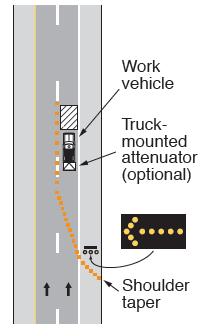
Figure 61. Flashing arrow panel at lane closure taper
In implementing advance signing for lane closures as per MUTCD Part 6, it is recommended that:
OR
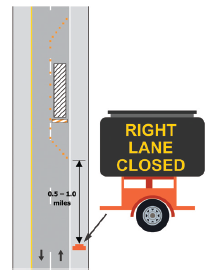
Figure 62. Changeable message sign upstream of lane closure taper
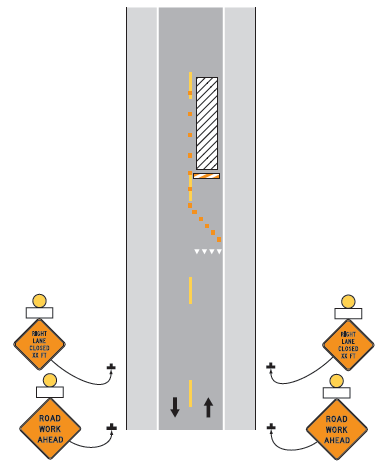
Figure 63. Redundant static signs upstream of lane closure taper
To increase the legibility distance of ground-mounted work-zone signs, the use of fluorescent orange is recommended over the use of beaded high-intensity orange sheeting.
A minimum specific ratio of 1 inch of letter height per 30 feet of legibility distance should be used.
The rationale and supporting evidence for these treatments can be found beginning on page 290 of the Handbook.
The MUTCD requires that no more than two phases be used on a changeable message sign (CMS). If a message cannot be conveyed in two phases, multiple CMSs and/or a supplemental highway advisory radio message should be used; alternatively, the action statement only may be presented on a single page/phase.
Each phase of a CMS message should be displayed for a minimum of 3 s.
When a CMS is used to display a message in two phases, the problem and location statements should be displayed during phase 1 and the effect or action statement during phase 2, as illustrated in Figure 64.
If legibility distance restrictions rule out a two-phase display, the use of abbreviations [as specified in the MUTCD (FHWA, 2007)] plus elimination of the problem statement is the recommended strategy to allow for the presentation of the entire message in one phase, as illustrated in Figure 65.
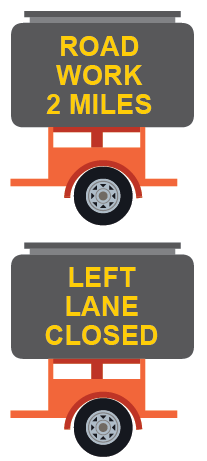
Figure 64. Phase 1 (top) and Phase 2 (bottom)
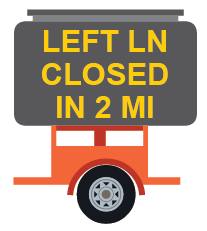
Figure 65. Use of approved abbreviation in one-phase message
For superior legibility:
Portable changeable message signs should be elevated to a height sufficient to be seen across multiple lanes of (same-direction) traffic by approaching passenger car drivers.
The rationale and supporting evidence for these treatments can be found beginning on page 300 of the Handbook.
The following minimum dimensions or properties for channelizing devices used in highway work zones are recommended to accommodate the needs of aging drivers:
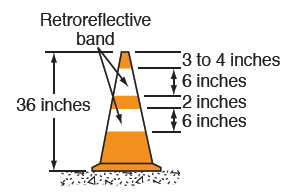
Figure 66. Traffic cone for nighttime work zone operations
Channelizing devices through work zones (in non-crossover applications) should be spaced at no more than a distance in feet equal to the speed limit through the work zone in miles per hour (e.g., in 40-mph work zone, channelizing devices should be spaced no farther apart than 40 ft). Where engineering judgment indicates a special need for speed reduction where there is horizontal curvature or through the taper for a lane closure, spacing of channelizing devices at a distance in feet equal to no more than half of the speed limit in miles per hour is recommended (e.g., in a 40-mph zone, space the devices no farther apart than 20 ft).
The use of side reflectors with cube-corner lenses or reflectors (facing the driver) mounted on top of concrete safety-shaped barriers and related temporary channelizing barriers is recommended, spaced (in feet) at no more than the construction zone speed limit (in miles per hour) through a work zone.
The rationale and supporting evidence for these treatments can be found beginning on page 313 of the Handbook.
Use positive barriers in transition zones and positive separation (channelization) between opposing two-lane traffic throughout a crossover, for intermediate- and long-term-duration work zones, for all roadway classes except residential.
A maximum spacing (in feet) of one-half the construction zone speed limit (in miles per hour) for channelizing devices (other than concrete barriers) is recommended in transition areas, and through the length of the crossover, and in the termination area downstream (where operations as existed prior to the crossover resume).
Use side reflectors with cube-corner lenses spaced (in feet) at no more than the construction zone speed limit (in miles per hour) on concrete channelizing barriers in crossovers (or alternately, the use of retroreflective sheeting on plastic glare-control louvers [paddles] placed in crossovers).
It is recommended for construction/work zones on high-volume roadways that glare-control screens be mounted on top of temporary traffic barriers that separate two-way motor vehicle traffic, when used in transition and crossover areas, at a spacing of not more than 24 in.
The rationale and supporting evidence for these treatments can be found beginning on page 318 of the Handbook.
Where temporary pavement markings shorter than the 10-ft standard length are implemented, it is recommended that a raised pavement marker be placed at the center of the gap between successive markings.
The rationale and supporting evidence for this treatment can be found beginning on page 323 of the Handbook.
These are treatments being utilized by transportation agencies that should benefit aging road users as determined by a subjective assessment by staff participating on the development of this Handbook. Current trends indicate these practices have a positive impact on aging road user safety.
It is recommended that some "action" words on temporary work zone signs on portable sign stands have a minimum letter height of 8 in. (see Figure 67)
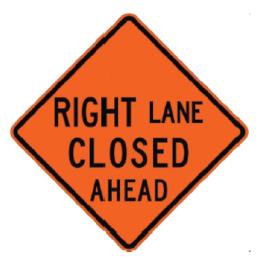
Figure 67. Temporary work zone sign with increased letter height
The rationale and supporting evidence for these treatments can be found beginning on page 328 of the Handbook.
The Work Zone Road Safety Audit Guidelines and Prompt Lists provide a process for individuals or agencies performing formal work zone safety examinations to improve the safety of workers and all roadway users, including the aging population. This document includes guidance on conducting Road Safety Audits (RSA) at all phases of work zone planning, design and deployment, and considerations for each project phase. The guidelines and prompt lists explain the importance of the Work Zone RSA and navigate the practitioner through the RSA process.
The rationale and supporting evidence for these treatments can be found beginning on page 329 of the Handbook.
